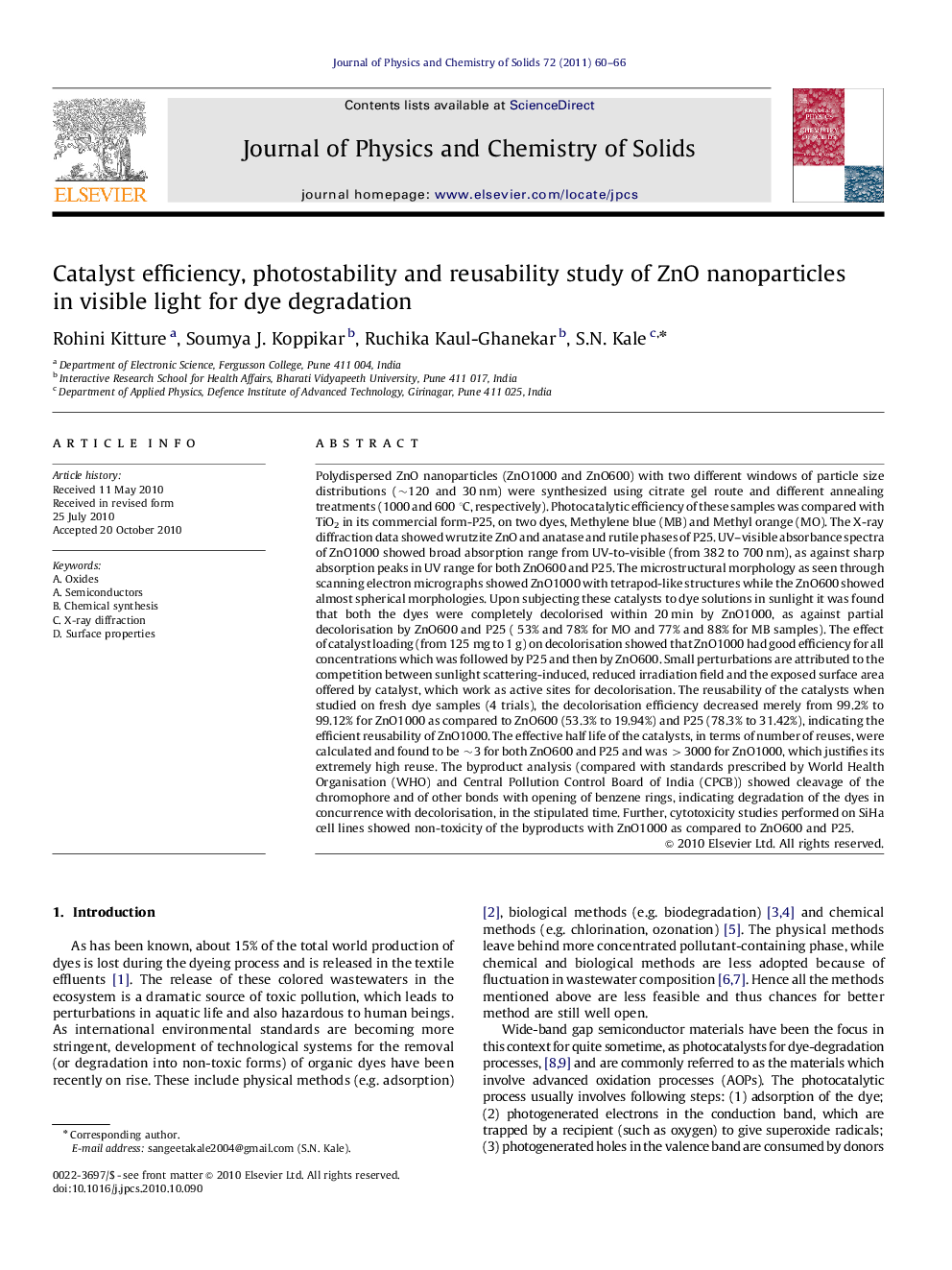| کد مقاله | کد نشریه | سال انتشار | مقاله انگلیسی | نسخه تمام متن |
|---|---|---|---|---|
| 1516686 | 1511577 | 2011 | 7 صفحه PDF | دانلود رایگان |

Polydispersed ZnO nanoparticles (ZnO1000 and ZnO600) with two different windows of particle size distributions (∼120 and 30 nm) were synthesized using citrate gel route and different annealing treatments (1000 and 600 °C, respectively). Photocatalytic efficiency of these samples was compared with TiO2 in its commercial form-P25, on two dyes, Methylene blue (MB) and Methyl orange (MO). The X-ray diffraction data showed wrutzite ZnO and anatase and rutile phases of P25. UV–visible absorbance spectra of ZnO1000 showed broad absorption range from UV-to-visible (from 382 to 700 nm), as against sharp absorption peaks in UV range for both ZnO600 and P25. The microstructural morphology as seen through scanning electron micrographs showed ZnO1000 with tetrapod-like structures while the ZnO600 showed almost spherical morphologies. Upon subjecting these catalysts to dye solutions in sunlight it was found that both the dyes were completely decolorised within 20 min by ZnO1000, as against partial decolorisation by ZnO600 and P25 ( 53% and 78% for MO and 77% and 88% for MB samples). The effect of catalyst loading (from 125 mg to 1 g) on decolorisation showed that ZnO1000 had good efficiency for all concentrations which was followed by P25 and then by ZnO600. Small perturbations are attributed to the competition between sunlight scattering-induced, reduced irradiation field and the exposed surface area offered by catalyst, which work as active sites for decolorisation. The reusability of the catalysts when studied on fresh dye samples (4 trials), the decolorisation efficiency decreased merely from 99.2% to 99.12% for ZnO1000 as compared to ZnO600 (53.3% to 19.94%) and P25 (78.3% to 31.42%), indicating the efficient reusability of ZnO1000. The effective half life of the catalysts, in terms of number of reuses, were calculated and found to be ∼3 for both ZnO600 and P25 and was >3000 for ZnO1000, which justifies its extremely high reuse. The byproduct analysis (compared with standards prescribed by World Health Organisation (WHO) and Central Pollution Control Board of India (CPCB)) showed cleavage of the chromophore and of other bonds with opening of benzene rings, indicating degradation of the dyes in concurrence with decolorisation, in the stipulated time. Further, cytotoxicity studies performed on SiHa cell lines showed non-toxicity of the byproducts with ZnO1000 as compared to ZnO600 and P25.
Journal: Journal of Physics and Chemistry of Solids - Volume 72, Issue 1, January 2011, Pages 60–66